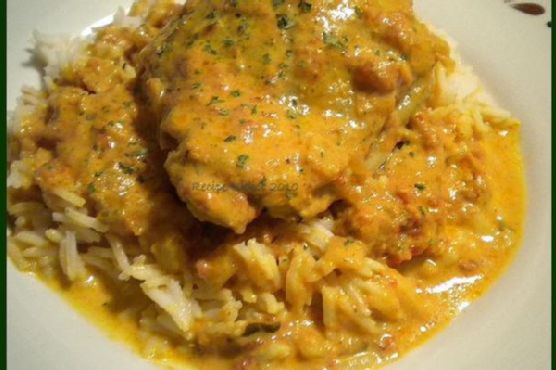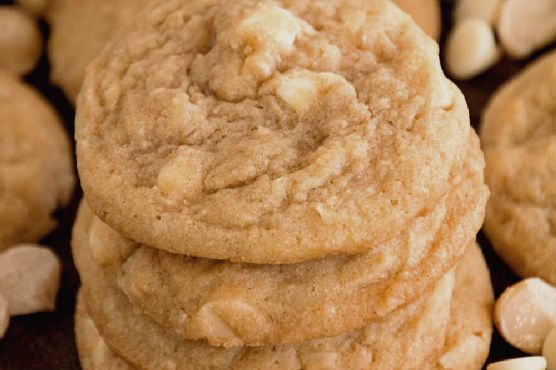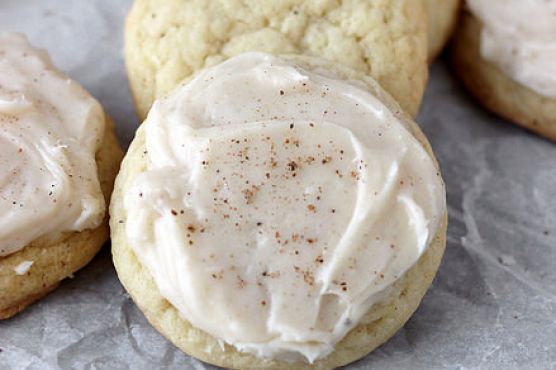Butter Chicken
If you want to add more Indian recipes to your repertoire, Butter Chicken might be a recipe you should try. For $2.26 per serving, you get a hor d'oeuvre that serves 4. One portion of this dish contains around 12g of protein, 57g of fat, and a total of 653 calories. This recipe from Foodista has 4 fans. A mixture of canned tomatoes, butter, garlic, and a handful of other ingredients are all it takes to make this recipe so scrumptious. From preparation to the plate, this recipe takes approximately 45 minutes. It is a good option if you're following a gluten free diet. Overall, this recipe earns a solid spoonacular score of 57%. No-Butter Butter Chicken, Chicken Makhani (Indian Butter Chicken), and Makhani Chicken (Indian Butter Chicken) are very similar to this recipe.
Servings: 4
Preparation duration: -1 minutes
Cooking duration: -1 minutes
Ingredients:
4 pieces boneless, skinless chicken thighs
2 cups buttermilk
2 cloves garlic, minced
1 teaspoon salt
1/2 teaspoon black pepper
1/2 teaspoon cayenne pepper
1/4 teaspoon ground coriander
1/4 teaspoon cumin
1/4 teaspoon cardamom
1 tablespoon oil
1 small onion, minced
2 tablespoons butter
2 teaspoons lemon juice
2 teaspoons ginger, finely grated
2 garlic cloves, minced into a paste
2 teaspoons garam masala, divided
1 bay leaf
1 can (14.5 oz. can) tomato sauce
1 can (14.5 oz. can) petite diced tomatoes
1 pint whipping cream
1 bunch chopped cilantro, to taste
Equipment:
sauce pan
frying pan
Cooking instruction summary:
Combine first 9 ingredients and marinate overnight. Heat 1 tablespoon oil in a large saucepan over medium high heat. Saute onion until soft and translucent. Stir in butter, lemon juice, ginger, garlic , 1 teaspoon garam masala, cumin and bay leaf. Cook, stirring, for 1 minute. Add tomato sauce and diced tomatoes, and cook for 2 minutes, stirring frequently. Stir in cream. Reduce heat to low, and simmer for 10 minutes, stirring frequently. Season with salt and pepper. Remove from heat and set aside. Heat 1 tablespoon oil in a large heavy skillet over medium heat. Cook chicken until lightly browned, about 10 minutes. Reduce heat, and season with 1 teaspoon garam masala and. Stir in a few spoonfuls of sauce, and simmer until liquid has reduced, and chicken is no longer pink. Stir cooked chicken into sauce. Mix together cornstarch and water, then stir into the sauce. Cook for 5 to 10 minutes, or until thickened. Top with cilantro, if desired.
Step by step:
1. Combine first 9 ingredients and marinate overnight.
2. Heat 1 tablespoon oil in a large saucepan over medium high heat.
3. Saute onion until soft and translucent.
4. Stir in butter, lemon juice, ginger, garlic , 1 teaspoon garam masala, cumin and bay leaf. Cook, stirring, for 1 minute.
5. Add tomato sauce and diced tomatoes, and cook for 2 minutes, stirring frequently.
6. Stir in cream.
7. Reduce heat to low, and simmer for 10 minutes, stirring frequently.
8. Season with salt and pepper.
9. Remove from heat and set aside.
10. Heat 1 tablespoon oil in a large heavy skillet over medium heat.
11. Cook chicken until lightly browned, about 10 minutes.
12. Reduce heat, and season with 1 teaspoon garam masala and.
13. Stir in a few spoonfuls of sauce, and simmer until liquid has reduced, and chicken is no longer pink.
14. Stir cooked chicken into sauce.
15. Mix together cornstarch and water, then stir into the sauce.
16. Cook for 5 to 10 minutes, or until thickened.
17. Top with cilantro, if desired.
Nutrition Information:
covered percent of daily need
Related Videos:
Butter Chicken Mac 'N' Cheese
Butter Chicken Tikka Recipe - Chicken Tikka Kebab - Indian Chicken Tikka - Varun
Butter Chicken Meatballs | How to make Butter Chicken Meatballs | Butter Chicken Recipe By Prateek















